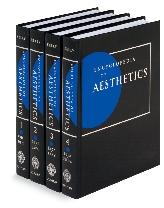Moore, Ronald. "Moral Rights of Art: Historical and Conceptual Overview," in Vol. 2 Encyclopedia of Aesthetics, edited by Michael Kelly, 288-292. New York: Oxford University Press, 1998.
Do artworks have rights? The deceptively simple form in which the question is usually put masks its daunting internal complexity. For one thing, the rights in question may aim at protecting works against a host of harms, among them deliberate alteration, mutilation, destruction, misattribution, and inappropriate display. For another, they may aim at enacting these protections in a variety of ways; they may be thought of as being located in different entities, enjoying different deontic modalities, carrying different quotients of normative force, and being aimed at achieving different effect. To determine the validity of any given rights claim made on behalf of an artwork, it will be necessary first to sift through these differences and identify which combination of traits is appropriate to the work in its particular normative context, then to make the argument that the traits identified add up to a right.
